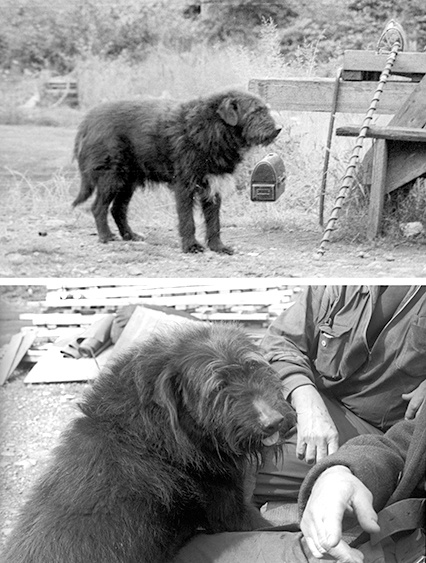One of the joys in writing this column are the picturesque stories of small details in and around a coal mine. Shown here is Pee Wee, the mine dog who found a home at the Rogers No. 3 mine in Ravensdale during the 1970s. Pee Wee was a stray who showed up one day and settled in as the miner’s pet, but also chief ratter keeping the hoist room free of rodent pests. The miners repaid their kindness by feeding him lunch scraps and fixing a bed by the coal burning, pot-bellied stove in the corner of the building. Pee Wee was always around for shift-changes when the morning and afternoon miners mingled about, as food and affection were liberally offered. These two photos by Barry Kombol from April 1974 show Pee Wee carrying a miner’s lunch box and receiving the attention which all canines crave.
In the early 1900s pit dogs, as they were then called occasionally pulled rail carts loaded with coal out of the mines in Allegheny County, Pennsylvania. The portal entrances to some mines were so small that even mules couldn’t enter or exit. In stepped dogs, typically shepherds or Newfoundlanders who were teamed in tandem and pulled cars of coal carrying about 400 pounds along steel rail tracks. A 1905 article in “The Black Diamond” declared that in the 1850s and 1860s nearly all the coal mines in and around Pittsburg used dogs to assist in mining. As business expanded, mules replaced dogs and eventually electric haulage from steam power replaced both. Yet dogs still found a reason to hang around coal mines. When Palmer Coking Coal Co.’s Roger No. 3 closed in 1975, Pee Wee became the last mine dog to grace an underground coal mine in Washington.







